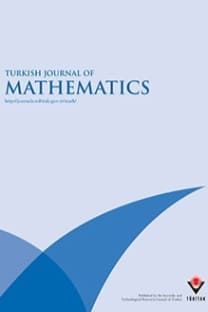An Exponential Model for Treatment Effects Without a Control Group
Controlled clinical trials, exponential probability distribution
An Exponential Model for Treatment Effects Without a Control Group
___
- [1] Bernstein L., Hanisch R., Sullivan-Halley J., Ross R. K.: Treatment with human Chorionic Gonadotropin and risk of breast cancer, Cancer Epidemiology Biomarkers & Prevention, Vol. 4, No. 5, pp. 437-440 (1995).
- [2] Fidler P., Loprinzi C. L., O’Fallon J. R., Leitch J. M., Lee J. K., Hayes D. L., Novotny P., Schutjer D. C., Bartel J., Michalak J. C.: Prospective evaluation of a chamomile moutwash for prevention of 5-FU induced oral mucositis, Cancer, Vol. 77, No. 3, pp. 522-525 (1996).
- [3] Fisher R. A.: On the mathematical foundations of theoretical statistics, Philosophical Transactions of the Royal Society of London, Series A, Vol. 222, pp. 309-368 (1922).
- [4] Hogg R. V., Craig A. T.: Introduction to Mathematical Statistics, Prentice Hall, Inc., Upper Saddle River, New Jersey, 1995.
- [5] Hornberger J. C., Brown B. WM. Jr.: Designing a cost-effective clinical trial, Statistics, No. 20, pp. 2249-2 (1995).
- [6] Khinchin A. Y.: Mathematical Foundations of Quantum Statistics, Dover Publications, Inc., Mineola, New York, 1998.
- [7] Moher D., Jadad A. R., Nichol G., Penman M., Tugwell P., Walsh S.:Assessing the quality of randomized controlled trials: An annotated bibliography of scales and checklists, Controlled Clinical Trials, Vol. 16, No. 1, pp. 62-73 (1995).
- [8] Robbins H.: The U,V method of estimation, in Statistical Decision Theory and Related Topics IV, Vol. 1, Editors; Gupta S. S., Berger J. O., p.p. 265-270, Springer-Verlag, New York, 1988.
- [9] Ross S.: A First Course in Probability, Macmillan Publishing Co., Inc., New York, 1976
- 10] Schmoor C., Olschewski M., Schumacher M.: Randomized and non-randomizes patients in clinical trials: Experiences with comprehensive cohort studies, Statistics in Medicine, Vol. 15, No. 3, pp. 263-271 (1966).
- [11] Senn S.: A personal view of some controversies in allocating treatments to patients in clinical trials, Statistics in Medicine, Vol 14, No. 24, pp. 2661-2674 (1995).
- [12] Szekli R.: Stochastic Ordering and Dependence in Applied Probability, Springer-Verlag, New York, 1995.
- ISSN: 1300-0098
- Yayın Aralığı: 6
- Yayıncı: TÜBİTAK
Common Fixed Point Theorems for Fuzzy Mappings in Quasi-Pseudo-Metric Spaces
Mustafa TELCİ, İlker ŞAHİN, Hakan KARAYILAN
An exponential model for treatment effects without a conrol group
An Exponential Model for Treatment Effects Without a Control Group
On the Value Set of n! Modulo a Prime
Florian LUCA, William D. BANKS, Igor E. SHPARLINSKI, Henning STICHTENOTH
On Intuitionistic Fuzzy Bi-Ideals of Semigroups
On Marcinkiewicz Integrals along flat surfaces
Formulas for the Fourier Coefficients of Cusp Form for Some Quadratic Forms
